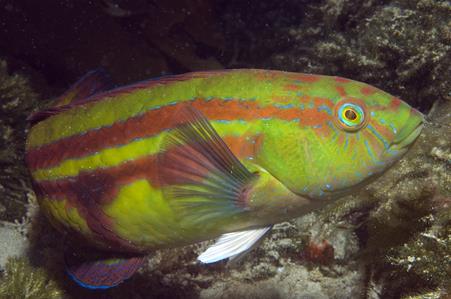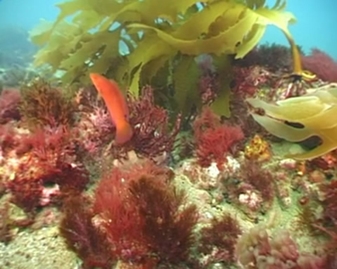General Description
Body moderately slender. Juveniles and females reddish-brown to greenish-brown with a row of black spots above the lateral line, 4-5 dusky bars on the lower sides and a black spot on the dorsal fin. Males distinctly green above and below, with a central yellow portion bounded by two dark violet or reddish stripes, a large wedge-shaped marking behind the pectoral fin and a dark spot on the anterior dorsal-fin spines. To 25 cm.
Biology
Senator Wrasse change sex from female to male during their life cycle and are sexually dimorphic in colour.
Habitat
Common in kelp and macro-algal beds on coastal reefs in 3-40 m.
Reefs
Distribution guide
Southern Australia.
Species Group
Fishes › Wrasses, rock whitings and allies
Depth
Water Column
Max Size
25 cm
Commercial Species
No
Global Dispersal
Native to Australia
Identify
Conservation Status
- DSE Advisory List : Not listed
- EPBC Act 1999 : Not listed
- IUCN Red List : Least Concern








